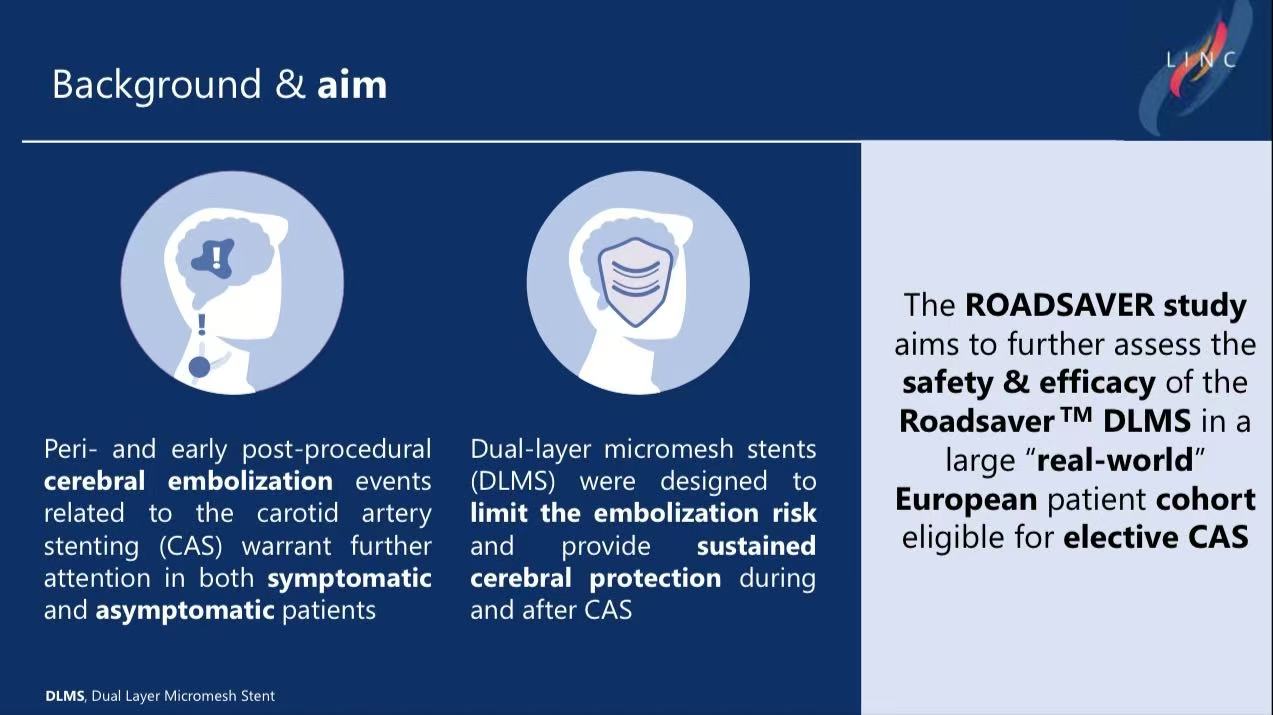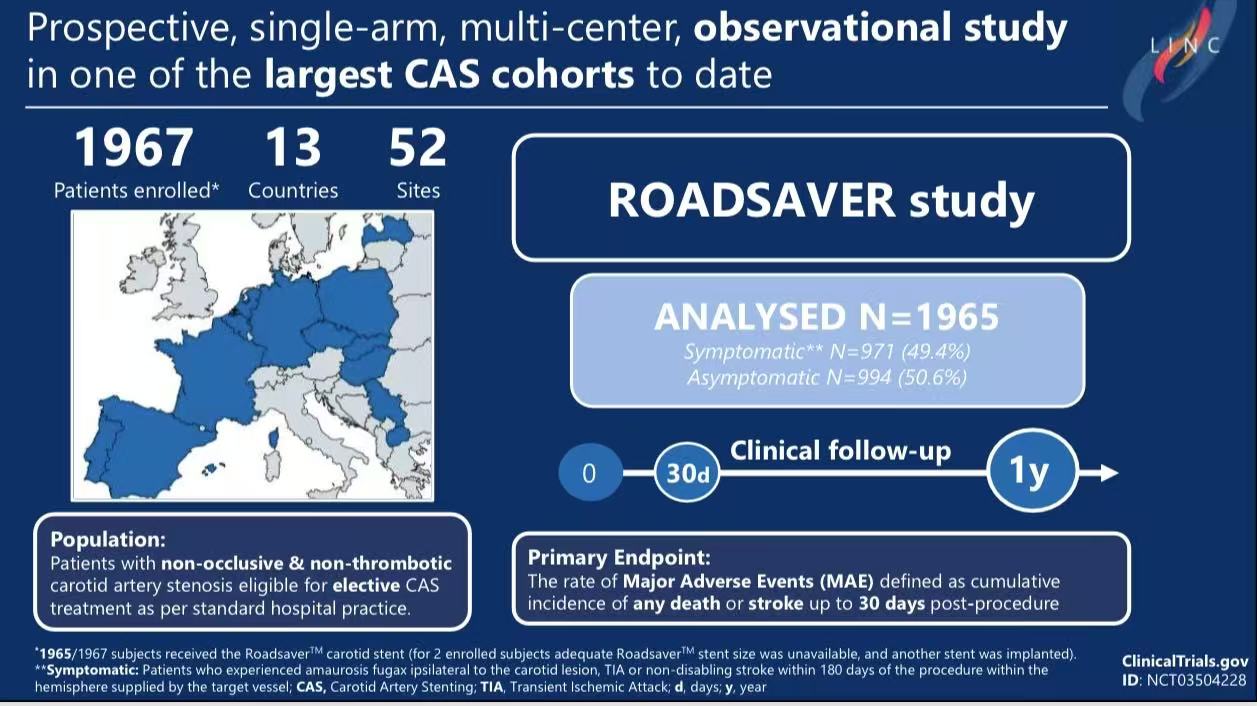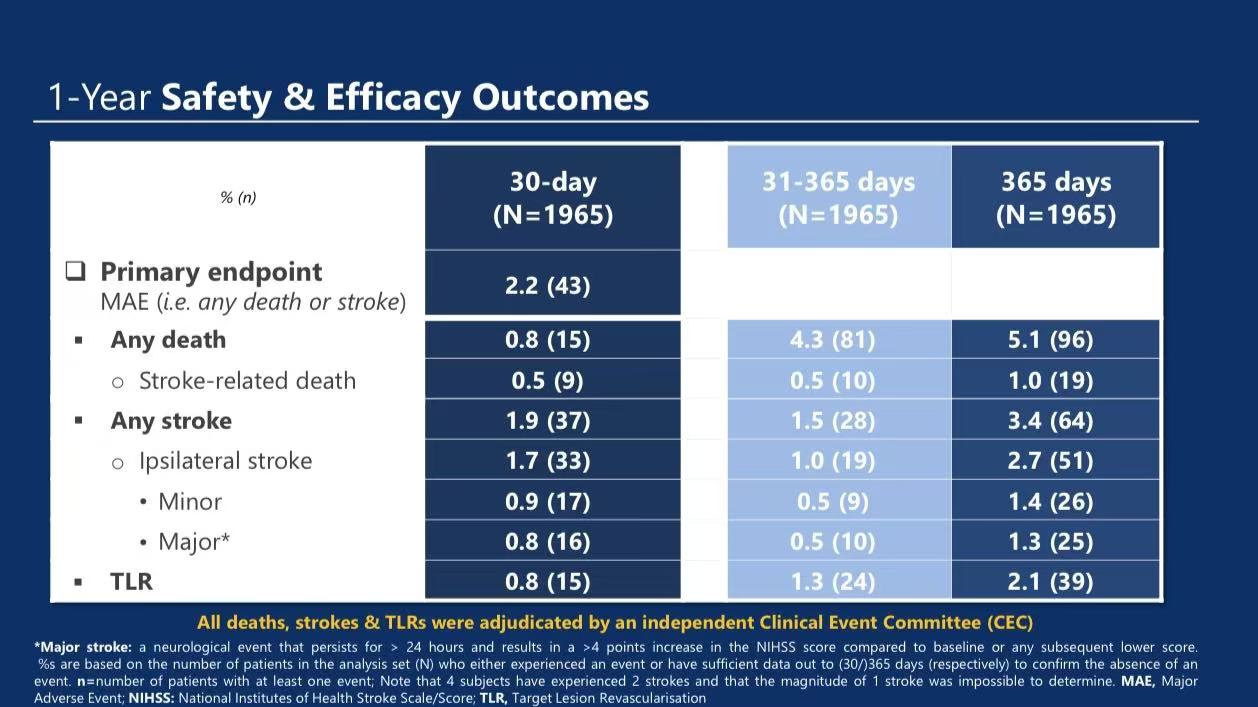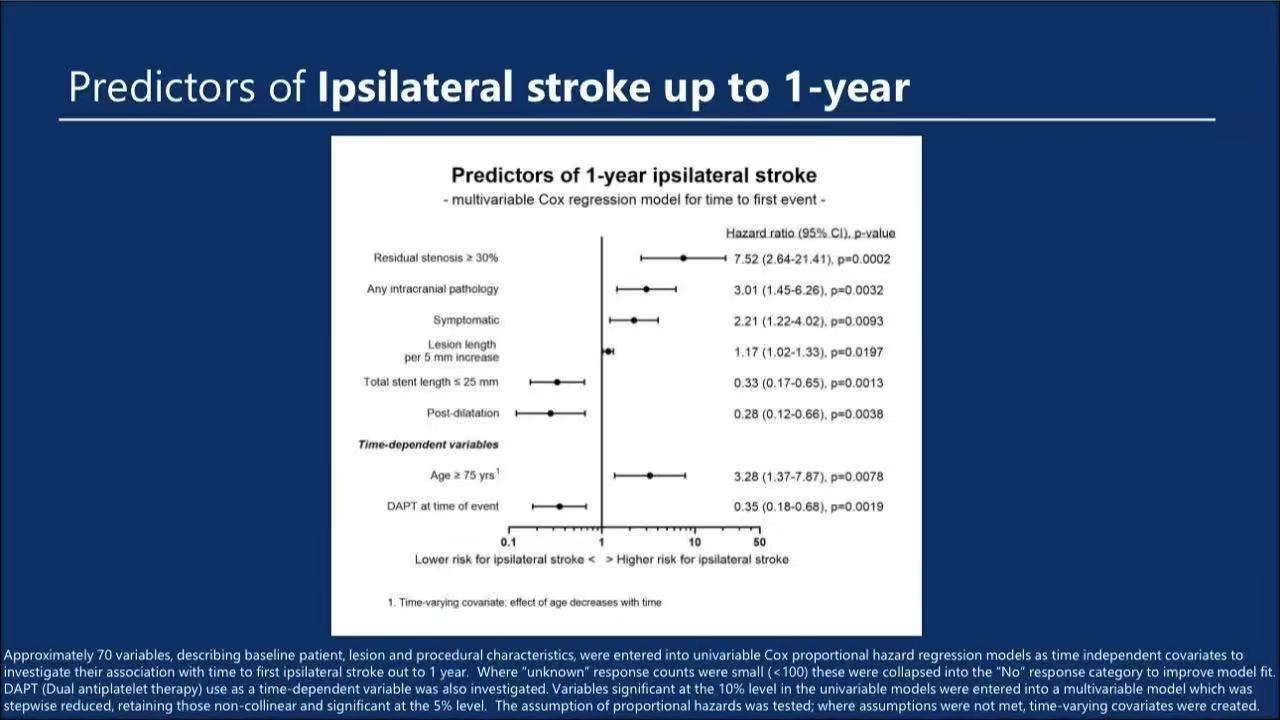Author: Dr. Ralf Langhoff
Institution: Sankt Gertrauden Hospital Berlin, Charité University Hospital Berlin, Germany
Summary
This presentation reports the final one-year follow-up data from the ROADSAVER study, which included approximately 2000 patients undergoing carotid artery stenting (CAS) with the ROADSAVER dual-layer micromesh stent (DLMS). The study demonstrates that ROADSAVER effectively reduces perioperative and post-procedural embolic events, confirming its safety and efficacy within a real-world European patient cohort.
Study Background and Design
• Background: The DLMS stent is designed to reduce embolic risk during CAS, providing continuous cerebral protection for both symptomatic and asymptomatic patients. This study assessed the effectiveness of the ROADSAVER stent in a real-world setting with European patients, focusing on those with non-occlusive and non-thrombotic carotid stenosis.

• Design: This was a single-arm, multicenter, prospective observational study involving 52 centers and 1965 patients, about half of whom were symptomatic. All patients underwent carotid revascularization with the ROADSAVER stent.

Primary Endpoints and Safety Data
• Primary Endpoint: The primary endpoint was major adverse events (MAE) within 30 days post-procedure, including all-cause mortality and stroke. At 30 days, the MAE rate was 2.2%, with 0.8% mortality and 1.9% stroke, indicating strong safety outcomes.
• One-Year Follow-Up: At one year, cumulative mortality was 5.1%, stroke rate was 3.4% (with contralateral stroke at 2.7%), and target lesion revascularization (TLR) rate was 2.1%, demonstrating stability in long-term patency and patient survival.

Analysis of Influencing Factors
• Stroke Predictors: Longer lesion length and residual stenosis were associated with higher stroke risk. Dual antiplatelet therapy (DAPT) significantly reduced stroke incidence, while higher age and symptomatic status increased stroke risk.

• TLR Predictors: Calcified lesions and obesity were significantly associated with TLR risk, as were stent length and lesion complexity.

Conclusion
1. The ROADSAVER DLMS stent has been validated in a large European patient cohort for safety and efficacy, effectively reducing embolic risk post-CAS.
2. The dual-layer micromesh stent shows substantial potential for improving long-term outcomes in CAS, particularly for high-risk, complex lesions.
3. Future studies will focus on extended follow-up data for the ROADSAVER stent to further assess its potential in patients with specific indications.
Contact Us
• Email: endovascluar@simtomax.cn
The English content has been synchronized with the Vasco Knight account. For more international information, please visit:
• www.vascularknight.com
• Facebook: Vasco Knight
• Instagram: knight_vasco
Let’s safeguard health together and showcase your brilliance to the world!


